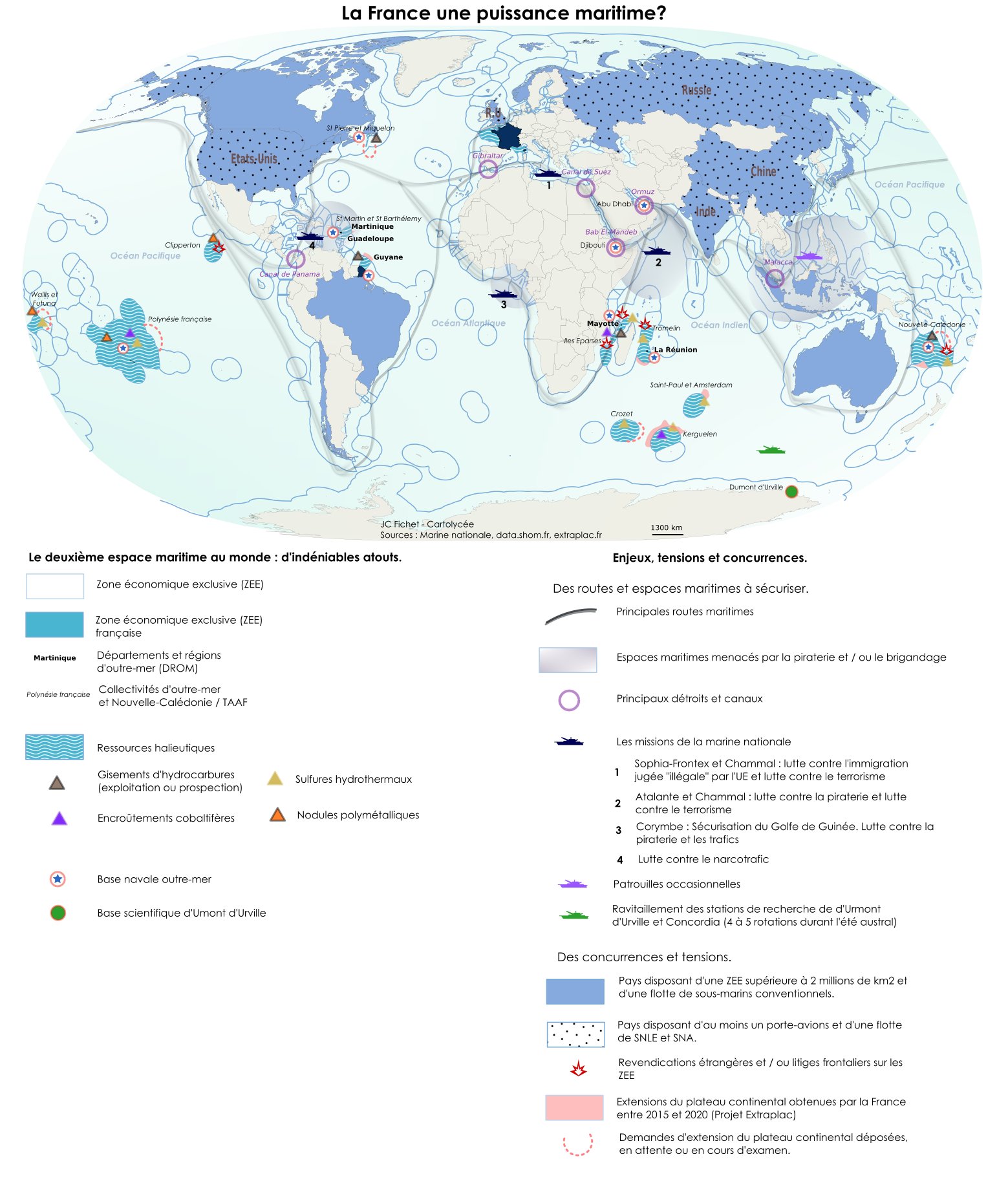Right: SHOM map 2014 – used on the “Tableau des superficies” webpage, Limites Maritimes
From Pew by Jérôme Petit
In January, France unveiled its new global marine conservation strategy with a goal of protecting 30% of its waters by 2022; a third of that would be shielded by “high protections” under the plan, meaning that extractive activities would not be allowed in the areas.
Achieving these goals would be a major step forward for global ocean health because France has the world’s second-largest exclusive economic zone (EEZ)—covering 11,691,000 square kilometers (4,514,000 square miles)—largely because of its numerous overseas territories, including French Polynesia, New Caledonia, and the French Southern and Antarctic Lands (TAAF)
Leading up to France’s announcement, the Pew Bertarelli Ocean Legacy Project partnered with the International Union for Conservation of Nature (IUCN) French Committee to bring experts and stakeholders together in a series of online conferences exploring the need for, and benefits and importance of, high marine protection—which should be the government’s focus now, given that it has almost achieved the 30% goal.
Marine protected areas benefit ocean health and coastal communities
The first conference of this series, held in September 2020, featured 12 French experts focused on ocean health and effective approaches to conserving biodiversity, including establishing fully safeguarded, well-managed marine protected areas (MPAs).
The experts explained that MPAs, specifically those with a high level of protection, provide measurable benefits to marine ecosystems and surrounding communities.
Such MPAs can protect seagrasses and reefs, which buffer coastal communities from the full impact of waves and safeguard coastlines from erosion.
They also can promote carbon sequestration by preserving mangrove forests, which can absorb at least three times as much carbon as terrestrial tropical forests.
In addition, conference participants highlighted how MPAs can benefit local economies. Research proves that fish are larger and more numerous inside an MPA than outside.
As fish populations mature and grow, they spill over into fishing grounds, generating greater catch and income for fisherman. MPAs can also help generate significant revenue related to tourism.
The importance of high protection
The potential benefits of MPAs can be fully realized only if those areas are large and highly protected, according to experts.
The potential benefits of MPAs can be fully realized only if those areas are large and highly protected, according to experts.
Although 23.5% of French maritime waters are designated as MPAs, some still permit activities such as industrial fishing that undermine the intended conservation benefits of the protections.
According to a recent paper published in the journal Marine Policy, less than 2% of French waters are fully or highly protected, and 80% of that total is concentrated in a single overseas territory: TAAF.
Panelists at another conference, held online in November 2020, noted that these highly protected waters are predominantly located in overseas territories with little traffic and less exposure to human pressures and therefore indicate a “lack of representativeness” of France’s marine habitats worldwide.
During the conference, experts recommended that France establish more highly protected MPAs—that better represent key habitats—across its territorial waters.
As part of its strategy announcement, France pledged to develop three three-year action plans with input from its overseas territories.
As part of its strategy announcement, France pledged to develop three three-year action plans with input from its overseas territories.
The first of these plans was released in January, and the implementation of this plan provides France with an opportunity to enhance its marine protection in order to deliver significant ecological benefits.
This would require it to create highly protected MPAs that restrict all extractive and damaging activities, such as industrial fishing.
A global call for action
The best available science tells us that we need to protect at least 30% of the ocean to conserve biodiversity and ecosystems, improve long-term food security, and protect ocean-based livelihoods.
Today, more than 70 countries, including France, have publicly committed to achieve this goal by 2030, and more than 100 countries are united in their support for a global biodiversity target to significantly increase the protection and conservation of the planet’s ocean over the next decade.
France plays a leading role in promoting the 30% global target through the High Ambition Coalition.
With this global momentum, countries can deliver a post-2020 framework at the 15th Conference of the Parties to the Convention on Biological Diversity later this year; that framework should include a robust ocean target that calls for effective marine protections, with the focus on areas important for biodiversity and ecosystem services.



No comments:
Post a Comment